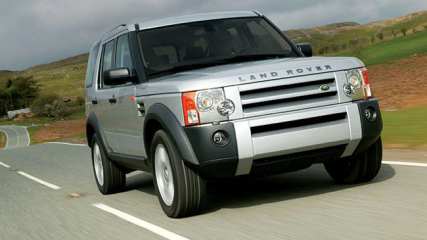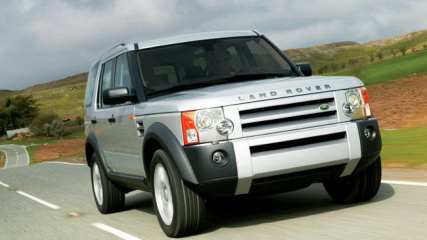Land Rover Discovery 3 2006 Review
By Ashlee Pleffer · 23 Aug 2006
Preparing for a weekend away at the snow for five people, including three females who don't know the meaning of packing lightly, was never going to be easy. Along with four snowboards, it was clear we were going to need a roomy and comfortable vehicle. Plus, with fussy passengers, not just any car would do.The big, black, boxy and powerful Land Rover Discovery 3 came to the rescue. And by big, I mean big.Big windows, a big steering wheel, big body, big wheels and most importantly, a big engine.The Discovery towers over other cars on the road.At first it feels huge, and is a little daunting in peak-hour traffic. But once settling into the cosy interior and the car's good handling ability, it becomes a little less scary and is exciting to drive.The car tested was the $89,990 range-topping V8 HSE, which has a Jaguar-derived engine.With plenty of luxury features and space, it was more than adequate for our big adventure, delivering 220kW at 5500rpm and 427Nm at 4000rpm.On long stretches of highway, the Disco flies, despite its weight and baggage, and cruise control is needed to remind you to stick to the speed limit.The torquey V8 engine, which seems to always want to go faster, has good pull up hills as it digs deep for that extra burst of power, even with the excess weight.Around bends it becomes a little harder to control, especially with heavy winds and windows open, while travelling at the faster speeds. For its size, the Discovery has a comfortable turning circle and moves pretty easily around tight turns and grips the road nicely, absorbing the bumps.But with a big square back, it's hard to manoeuvre in tight car parks, which meant trusty passengers were often enlisted to assist and, alone, it's especially difficult. The parking sensors were handy but became a little irritating as they beeped constantly with plenty of distance still to move.Its inaccuracy also showed when cars travelling in the opposite direction set off the beeping.Inside the Discovery, there was plenty of room for all the gear and the lack of rear vision due to the luggage piled high in the back was adequately compensated for by the large external rear-vision mirrors.The Discovery 3 comes with a third row of seats, consisting of two fold-ups in the back. The versatility of the seating arrangement is great for transporting gear like snowboards, with the ability to fold down individual seats in the second and third rows.And those rear fold-up seats are more comfortable than expected. One passenger in particular took a liking to the large amount of leg room and facilities such as cup holders and a place to connect her much-loved iPod, all at her disposal.The Discovery is not short on storage space, with a double glovebox in the front. Both the driver and front passenger also get an armrest.Extra airconditioning controls are found in the middle row to control the climate for backseat passengers and when we finally found the switch to activate them, it gave this driver much ease from some whingeing companions. A cool feature on the Disco is the air suspension, which raises the car or lowers it as you wish, making exiting the car and low-level car parks much easier to tackle.It also has a Terrain Response system providing different settings for different conditions, such as snow, mud, sand, deep ruts and grass.The engine, transmission, suspension and traction settings all adjust for better driving.The Discovery was rather expensive to run, costing more than $100 to fill up, but that can be expected in such a large car. We recorded an average fuel consumption figure of 15.2l/100km, mainly on the highway.The test car had extras including satellite navigation, sunroof, rear airconditioning and parking sensors which would add about $15,000.Fast factsLand Rover Discovery 3Price: $89,990 (as tested $104,590)Engine: 4.4-litre V8, 220kW@5500rpm, 427Nm@4000rpmTransmission: 6-speed automatic transmission with tiptronicFuel: 86-litre tank 15.0L/100km combined claimed, 15.2L/100km as testedVerdict: Very bulky to drive, but offers a lot of space and great performance. AlternativesBMW X5 4.4iPrice: $111,500Engine: 4.4-litre V8, 235kW@6100rpm, 440Nm@3700rpmTransmission: 6-speed automatic transmission with SteptronicFuel: 93-litre tank, 13.1L/100kmVerdict: With a nice interior and smooth acceleration, the X5 offers a luxury cruise on and off the bitumen, but at a more expensive price.Mercedes ML500Price: $116,900Engine: 5.0-litre V8, 225kW@5600rpm, 460Nm@2700-4750rpmTransmission: 7G-Tronic 7-speed transmissionFuel: 95-litre tank, 13.4L/100kmVerdict: Similar performance figures to the Discovery and better fuel economy, but this also comes with a hefty price tag.






